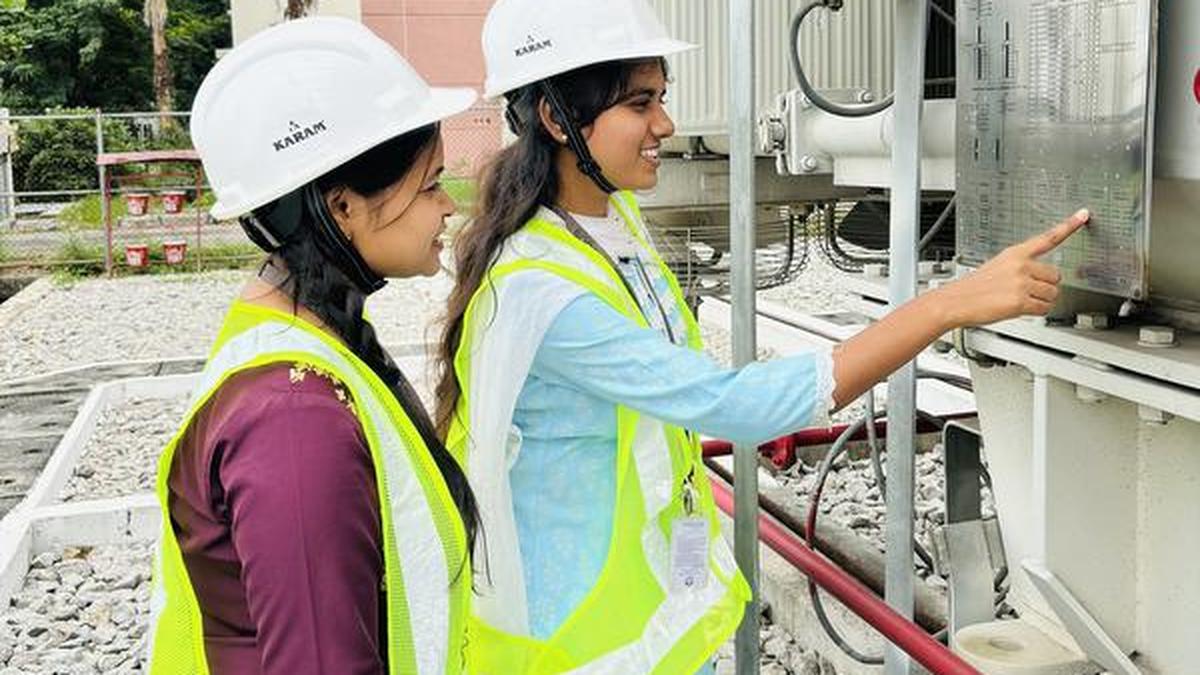Members of Power Supply Systems (PSS) and Overhead Electrification (OHE) teams of the Hyderabad Metro Rail inspecting the power supply equipment to ensure uninterrupted train service.
Hyderabad Metro Rail (HMR) is not just about the trains but also the key infrastructure that helps the rolling stock run smoothly for about 18 hours daily, uninterrupted.
Nearly five lakh passengers in the twin cities commute daily by metro across the three corridors for 69.2 km in the capital region.
Behind the sleek, modern face of the metro rail built and run by L&T Metro Rail Hyderabad (L&TMRH) lies a complex network of systems, such as the Power Supply Systems (PSS) and Overhead Electrification (OHE) infrastructure, which require constant care and attention.
Special teams
Specialised PSS and OHE teams are responsible for maintaining the dense network of substations, overhead lines, and traction power systems that keep the metro trains running around the clock. These teams work in shifts to monitor the four 132kV substations supplying power to the metro rail system by conducting regular inspections and troubleshooting.
Any disruption in the power supply can lead to significant delays and inconvenience for thousands of commuters, say metro rail officials.
“Our engineers ensure that the electrical systems converting power from the substations into a suitable form for the trains are proper by minutely inspecting and repairing components such as transformers, rectifiers, and inverters,” explains L&TMRH chief operating officer (COO) Sudhir Chiplunkar.
Challenging work
“The primary source of power for the metro rail system is the overhead power line, and its maintenance is quite a challenge as we have to work on-site. It includes inspection, repair and replacing of worn out lines and overhead lines,” adds senior engineer B. Uday Kiran.
These teams ensure that tension, alignment, and contact of the power cables with the ‘pantographs’ are maintained properly atop the trains through which the supply is routed. In this manner, they thoroughly maintain the 25kV OHE of 138.2 km track across the system.
The PSS and OHE teams consist of diverse, skilled individuals, including engineers, technicians, and support staff. Their work involves personnel who work in extreme temperatures and adverse weather.
“Temperatures can be over 40°C sometimes, making the outdoor work physically demanding and potentially dangerous. The monsoon season brings heavy rains, creating slippery surfaces and increasing the risk of electrical hazards,” say traction supply engineer Ch. Reecha and power supply engineer S.M. Nutana.
Emergency-ready
The technical teams’ responsibilities also extend beyond routine maintenance as they have to monitor the system in real time and be ready to respond to emergencies.
“Commuters most often do not even notice power disruption as our teams, equipped with the latest tools and safety gear, quickly troubleshoot problems and restore supply. They are the backbone of our operations,” says CEO & MD K.V.B Reddy.
Acknowledging the crucial role of the PSS and OHE teams, he says the technical teams’ dedication and expertise are what make the metro rail system reliable and efficient, providing a seamless commuting experience for millions of passengers daily.
Published – January 18, 2025 10:52 am IST
